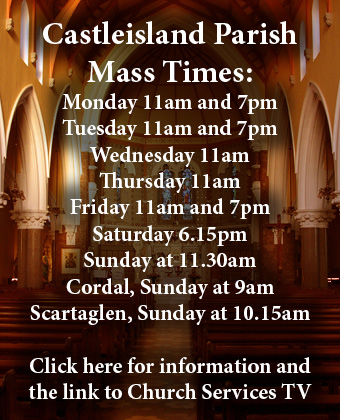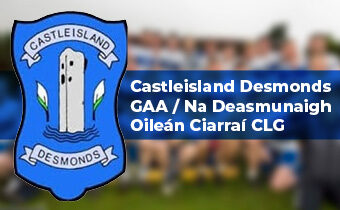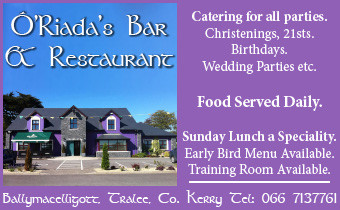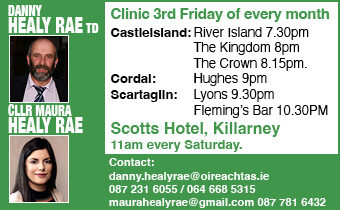
We have entered a year which marks a rounded-up anniversary of the foundation of Castleisland. It is now 790 years since old Geoffrey de Marisco got planning permission to build a castle on a flood plain here in Castleisland. In complete contrast though to modern-day developers up and down this country, the clued-in Geoffrey knew what he was doing and also understood that the local flooding pattern was part of his great plan rather than showing up later as a geographical ignorance.
In 1226 the chequered-careered Geoffrey turned the first sod on the castle site which was to give the town its name eventually. It is highly likely that the original castle was a timber construction which would have come in flat-pack form across the sea. The centuries which followed would have seen the magnificent stone structure put in place – the ruin of which we now see just off Castle Street.
There are many stories attached to the castle and most are bloody tales of conflict and strife. There is one though, from the Irish Folklore Commission’s brilliant brainwave in the mid 1930s. At that time they approached primary schools around the country and asked the school-children to talk to their parents, grandparents and elderly neighbours and, most importantly, to write down what they heard from them.
One such item in the collection concerns a rare fable surrounding the castle and its inhabitants. It was told by a Mrs. Brosnan of Moloughmarkey to a Hannah Horan and here it is:
Local Ruins: Castleisland Castle
Many stories dealing with the old castle in Castleisland are told, and those were handed down by our forefathers from generation to generation.

The most common tale told concerning the castle is that after the death of Sir Maurice Fitzgerald his sister inherited the castle. She married a magician who was noted for his magic powers.
She often begged him to display his magic arts for her entertainment.
One day, after long pleading on her part, he promised to gratify her on the condition that, no matter what occurred, she would show no sign of fear. To this she readily agreed.
Then, as now, the River Maine flowed beneath the castle walls. The Earl leaped out of the window into the river below, and, much to the delight of his curious wife, changed himself into various creatures.
At length he took the form of a huge and terrible monster, and opening his wide and fearful jaws made towards her as if to swallow her.
This proved too much for the timid woman, forgetting her promise she yelled and screamed for protection. At that fatal moment the spell was broken and the unfortunate man was unable to resume his human shape. He was then turned into a goose and flew to a lake in Limerick where it is said he remained until his death.
The unhappy woman, the cause of all the misfortune, regretted her thoughtlessness, but though she repented sincerely and sent many messages to her lord begging him to return, he was powerless to break the spell cast upon him and had to pass the rest of his existence in banishment and solitude.
Told by Mrs. Brosnan, Moloughmarkey. Written by Hannah Horan, VIII Standard.
It’s an interesting tale and, do you know what? A forlorn and lone goose has been seen on the River Maine from time to time down through the years. One showed up at the Stanley Divane Pavilion across the road from the castle one morning in January 2014. Could he be a reincarnation of the one in Mrs. Brosnan’s tale. And anyway who knows what goes on in that other world?





















































